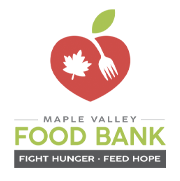Food Banking in 2023
Neighbors,
To say that the past three years have been a rollercoaster is an understatement. In peak pandemic, we spent our days adapting to an ever-growing need, working on unique, distance-based distribution models, and modifying services to better respond to our clients’ diverse stressors. We became experts of overnight change and were so proud of the thoughtfulness our team put into every rework.
Through this time, we were supported by dozens of new funding sources, passionate community members, businesses, and churches, and unprecedented amounts of food from our government partners. Not only that, but we had budgeted more of our own dollars to support independent food purchasing, should supports dry up.
Because of this, we were able to serve with a sense of both urgency and abundance; something not every food bank across the U.S. had the privilege of doing.
As the world began to return to normal, we anticipated that things would get easier. They had to, right?
But alas, the impacts of job loss continued to permeate, the cost of housing in our area continued to rise, and we saw record breaking inflation impact budgets for gas, groceries, and other basic needs. Our service-area population continued to increase, and hundreds of refugees sought supports in the area they now call home.
And so, our client counts continued to grow. In July 2022, we served 1,000+ more individuals than we had served in July 2020. Simultaneously, our major supports stalled.
As an organization by the community and for the community, we want to be transparent with you about what this looks like:
- Several grants we have come to rely on over the years have shifted their priorities and impact areas, deeming us ineligible.
- Community dollars are down as families wrestle with tighter budgets in the face of inflation.
- Food purchasing budgets have dramatically increased, not only because of growing client counts, but also the sheer cost of goods. Based on an October 2022 USDA report, food prices have increased by 12 percent in the past year.
- Long term impacts from the pandemic continue to harm our government partners, lessening the amount of food distributed to the Maple Valley Food Bank. Presently, one partner is operating at 80 percent less inventory than at this point last year, while another – whose inventory once swelled to 12 million pounds – has shrunk to less than one million. In cases like this, we see our primary food source dissipating before our eyes.
- The Maple Valley Food Bank has built its reserves in preparation for something like this and has been using your generous donations to ensure sustainability of services in these tough times.
We have committed more time to procuring and more dollars to purchasing than ever before. We continue to prioritize a choice model and are doing everything we can to ensure a grocery-style experience for those shopping the market.
However, with so many unknowns, such preparedness does not come without challenges.
Here’s how you can help this year:
- Continue to make monetary donations to the Maple Valley Food Bank to help offset rising food costs and growing needs, giving MVFB the flexibility to purchase goods on an as-needed basis.
- Make specific donations to the Food Bank based on current needs. We will work to share monthly updates of the most needed items and would be so grateful for your support in bridging the gap.
- Help us spread the word about Maple Valley Food Bank’s work to build a healthy community free of hunger. If this is a mission close to your heart, share it with those in your circle.
Thank you for working with us to #fighthunger and #feedhope yesterday, today, and for the days to come.
With gratitude,
![]()
Lindsey Habenicht, Executive Director
About the author:
Lindsey Habenicht is the Executive Director of the Maple Valley Food Bank located in Maple Valley, Washington. To reach Lindsey, call (425) 432-8633, Ext. 103 or email: info@maplevalleyfoodbank.org.







